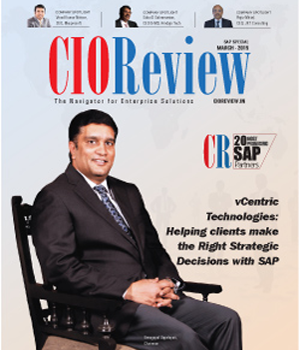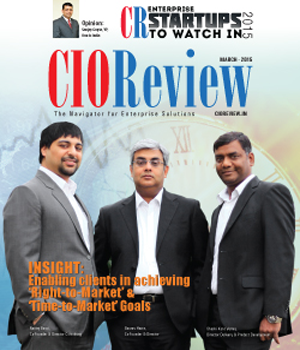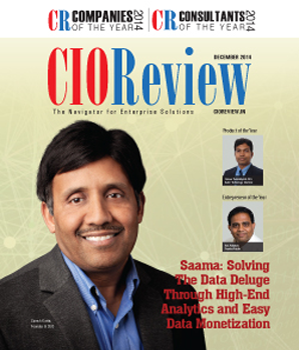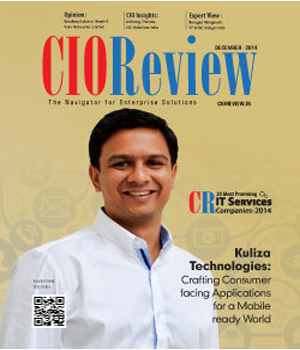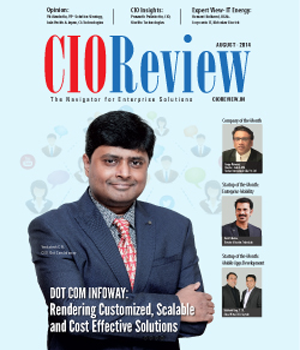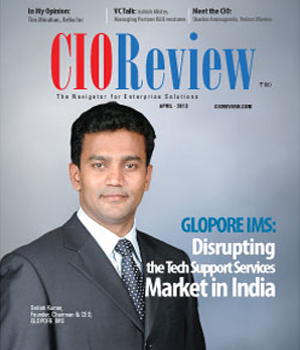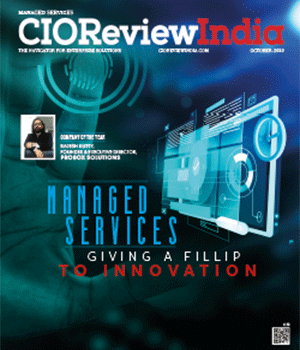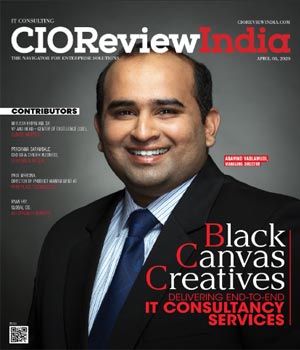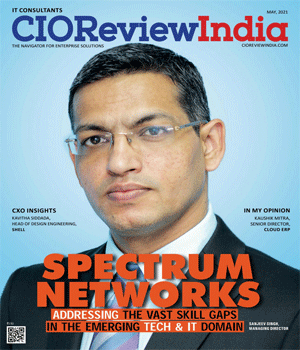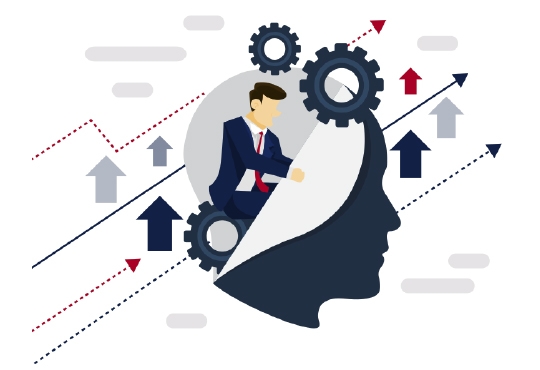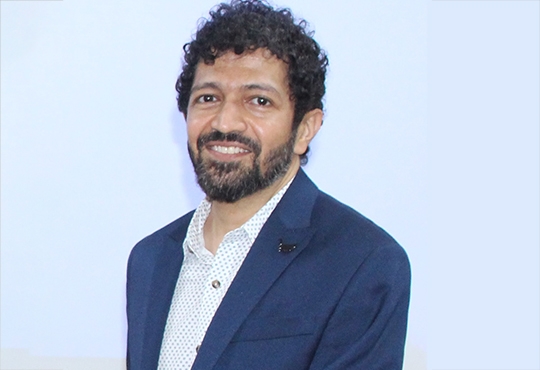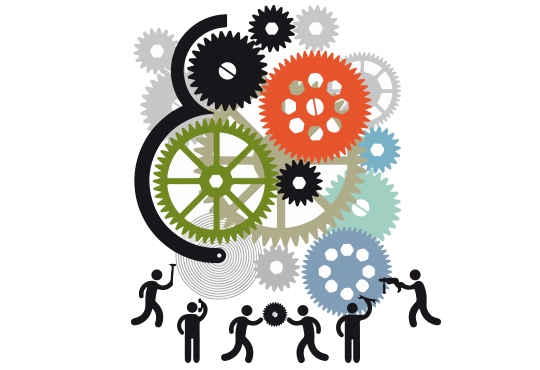
Innovation in IT: Meeting Evolving Demands and Anticipatory Solutions
K Shivasankar, Vice President - Technology & Solutions, India, NTT DATA Inc | Wednesday, 17 April 2024, 05:24 IST
 Shivasankar is a business leader with over three decades of experience in bringing products and services to market, setting up businesses, and driving sustainable growth. He is passionate, self-motivated, and has an entrepreneurial mindset, wherein he excels in strategy development, team building, and achieving profitable results.
Shivasankar is a business leader with over three decades of experience in bringing products and services to market, setting up businesses, and driving sustainable growth. He is passionate, self-motivated, and has an entrepreneurial mindset, wherein he excels in strategy development, team building, and achieving profitable results.In an exclusive interview with CIOTech Outlook magazine, Shivasankar walks us through the benefits of leveraging technology for the betterment of both individuals and organizations.
In today's rapidly evolving landscape, technology is not just advancing its own objectives; it's actively addressing real-world challenges across industries. Rather than merely serving its own purposes, technology is being harnessed thoughtfully to contribute to positive change, driving innovation, efficiency, and inclusivity.
How does technology actively address real-world challenges across industries instead of solely pursuing its own objectives?
Today, technology is being harnessed thoughtfully to address real-world challenges across various industries. So, rather than solely pursuing its own objectives, technology are being utilized to actively contribute to positive change. So it is imperative that prioritizing solutions over self-interest will not only help enterprises meet business goals but also drive innovation, efficiency, and inclusivity.
Now, let’s look at a few key areas that technology is making a huge difference.
In healthcare, technology enables remote patient monitoring, doorstep care delivery, and access to medical advice in remote areas. Smart diagnostic devices improve disease detection speed and accuracy. Furthermore, the benefits that can be reaped from smart grids utilizing IoT and AI optimize energy distribution, reduce waste, and promote sustainability. In addition, to enhance farming efficiency leveraging technology such as sensors, drones, and satellite imaging, monitors weather, crop health, and soil conditions can be a game changer. These advancements address challenges like food security. Leveraging technology purposefully can simultaneously tackle both real-world and business challenges, making it a potent force for positive change.
How does innovation drive the adaptation to evolving IT demands, and what forward-thinking solutions are tech enterprises embracing?
In current times, for tech enterprises to thrive, adapt, and lead in an ever-evolving IT landscape must drive the needed innovation and strategically leverage technology. Global enterprises maintain multiple research and development facilities to continually innovate, improve, and adapt solutions to better fulfill end-users' needs. For example, with the growing adoption of cloud technology, innovation played a crucial role in developing hybrid and multi-cloud solutions. These solutions drive agility by enabling the scaling of infrastructure on demand, allowing enterprises to reduce operational costs through resource optimization. Likewise, innovations such as Edge computing and 5G networks contribute to reducing latency, facilitating faster connectivity, which helps businesses create new services and opportunities.
What tech tools are molding remote work and digital collaboration across various sectors?
Remote work and digital collaboration have become indispensable in contemporary organizations, facilitated by various tech tools serving diverse purposes.
Today, platforms like Zoom, Microsoft Teams, Google Meet, and Cisco Webex lead the arena of virtual meetings.Similarly, project management tools like Slack and Trello, along with document collaboration suites such as Microsoft 365 and Google Workspace, are revolutionizing real-time content creation, editing, and data sharing.Furthermore, platforms like OneDrive and Dropbox facilitate online storage and file sharing, while VPN services ensure secure remote access to company networks across locations, safeguarding sensitive data during remote work. Additionally, industry-specific tools, such as Electronic Health Records (EHR) for healthcare service providers, are transforming remote patient monitoring and management. Hence to understand, these generic and sector-specific tools collectively shape the remote work and digital collaboration landscape.
How do interconnected technology tools facilitate collaboration between healthcare, manufacturing and BFSI sectors?
Currently, interconnected technologies play a pivotal role in shaping the collaborative future of the healthcare, manufacturing, and BFSI sectors.If we speak of the healthcare domain, the integration of Electronic Health Records (EHR) systems with telehealth platforms enable seamless knowledge exchange and ensure sharing of the crucial patient information among caregivers. This expedites patient care coordination and improves outcomes.
In manufacturing, the revolution is driven by IoT devices and real-time data analytics. These technologies collectively optimize resources and provide real-time situational awareness, enhancing production processes and collaboration among teams.
For the BFSI sector, interconnected systems streamline operations, boost transaction efficiency, and platforms like India’s UPI framework exemplify this. Utilizing blockchain for transparent record trails, integrating communication tools, and leveraging cloud-based applications can further enhance automation and data-driven decision-making across all industries. This interconnectivity not only enhances efficiency but also reinforces data security measures.
What pivotal role does data and AI play in transforming decision-making processes across diverse industries?
Considering the current market dynamics, the role of data and artificial intelligence (AI) is rapidly evolving in the decision-making processes of modern enterprises.Digital operations have opened numerous data generation streams, resulting in a substantial influx and diversity of unstructured data. Managing such vast and disparate data silos manually is nearly impossible. This is where AI-powered data analytics tools excel, providing the capability to analyze datasets at speeds beyond human capabilities.
AI algorithms can swiftly analyze hundreds of pieces of data across different formats, offering accurate, data-driven inputs for decision-making. In sectors like healthcare, this capability aids in analyzing health patterns, symptoms, and medical history, enabling faster disease identification and decisions regarding the best course of treatment - a crucial aspect that can save lives. Similarly, in the BFSI sector, institutions are employing AI data analytics tools for risk assessment and fraud detection.
Even in data centers, the integration of AI and data analytics with IoT sensors allows 24/7 monitoring of IT equipment, cooling, and building management systems. This results in significant resource optimization, reduced power consumption, and facilitates predictive maintenance of critical IT equipment, ensuring smooth and uninterrupted operations.
CIO Viewpoint
With Managed Services Organizations Can Reduce...
By Krishnakumar Madhavan, Head IT & Innovation, KLA Software India Pvt Ltd
By Amandeep Singh, Vice President & Group Head - IT Infrastructure, Thomas Cook India Limited
By Brian Clarke, Solutions Architect-Networking and Collaboration, OneNeck IT Solutions
CXO Insights
Innovation in IT: Meeting Evolving Demands and...
By K Shivasankar, Vice President - Technology & Solutions, India, NTT DATA Inc
Low-Code/No-Code: The Key to Intelligent...
By Sachin Panicker, Chief AI Officer, Fulcrum Digital
Maximizing Business Insight with Big Data...


